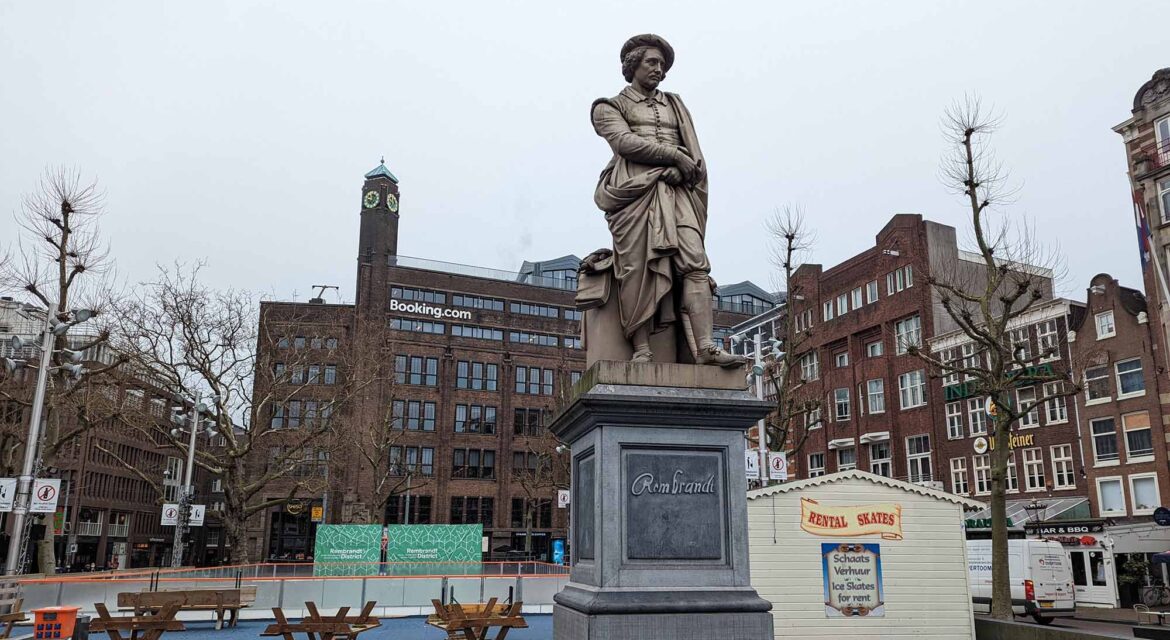 One of the busiest squares in the city of Amsterdam, Rembrandt Square (Rembrandtplein in Dutch) features a variety of activities and things to do for both residents and visitors. Defined by a sculpture of the famous Dutch painter, the landmark highlights what it can mean for a monument to define an identity that resonates in the hearts and minds of audiences of all types.
One of the busiest squares in the city of Amsterdam, Rembrandt Square (Rembrandtplein in Dutch) features a variety of activities and things to do for both residents and visitors. Defined by a sculpture of the famous Dutch painter, the landmark highlights what it can mean for a monument to define an identity that resonates in the hearts and minds of audiences of all types.

Named After the World-famous Dutch Artist
 Named after Rembrandt van Rijn, who owned a house nearby the square from 1639 to 1658, what is today Rembrandt Square was a place where farmers sold food and dairy products in the 17th century, which is why it became known as Botermarkt (butter market). It would eventually evolve into a popular gathering spot with the construction of hotels and restaurants across the area.
Named after Rembrandt van Rijn, who owned a house nearby the square from 1639 to 1658, what is today Rembrandt Square was a place where farmers sold food and dairy products in the 17th century, which is why it became known as Botermarkt (butter market). It would eventually evolve into a popular gathering spot with the construction of hotels and restaurants across the area.
The square would be more fully defined by the cast iron statue of Rembrandt that was made in 1852 by sculptor Louis Royer. It was moved into the center of the square in 1896, which saw the area renamed as Rembrandt Square. It was around this time that it became a hub of activity due to the popularity of the many cafes, hotels, bars and nightclubs that line the square and now define the popularity of the area.
A renovation in 2009 saw the Rembrandt statue mounted on a pedestal that features his signature, while the 400th birthday of Rembrandt saw the installation of bronze-cast representations of The Night Watch, which is Rembrandt’s largest and most famous painting. While the pieces were only a temporary installation, the Rembrandtplein Entrepreneurs Foundation began a fundraiser to keep the sculptures in the square throughout the year, highlighting the continual economic and community connections that such pieces can enable.
Bordered by grass and trees, Rembrandt Square has become one of the hotspots in Amsterdam. It provides a brand for businesses to utilize while also cultivating direct activities like ice-skating that can be easily combined with a day of shopping. The identity that the Rembrandt statue has provided has further cultivated this popularity, showcasing what it can mean when a monument makes such a major impact on audiences across the eras.

Embracing and Cultivating a Legacy
 Developed to be a center for nightlife and surrounded by countless shops and hotels, Rembrandt Square highlights what kind of an impact a monument can provide for an entire community. The statue of Rembrandt is recognized as the oldest statue in Amsterdam, underscoring how a monument can both enable and cultivate a legacy that benefits a community and an entire city.
Developed to be a center for nightlife and surrounded by countless shops and hotels, Rembrandt Square highlights what kind of an impact a monument can provide for an entire community. The statue of Rembrandt is recognized as the oldest statue in Amsterdam, underscoring how a monument can both enable and cultivate a legacy that benefits a community and an entire city.

